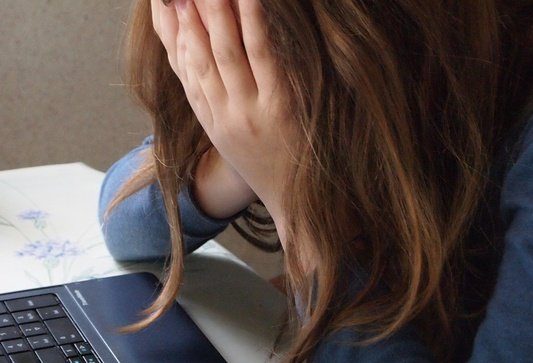 The pandemic has raised concerns about the way stress is affecting kids. Even though the word ‘trauma’ is on a lot of worried adults’ minds these days, information about it is wide-ranging and can leave people feeling unsure about what to do next.
The pandemic has raised concerns about the way stress is affecting kids. Even though the word ‘trauma’ is on a lot of worried adults’ minds these days, information about it is wide-ranging and can leave people feeling unsure about what to do next.
Trauma is a response to life-threatening events, harmful conditions or stressful environments, writes Vermont-based educator Alex Shevrin Venet in her book Equity-Centered Trauma-Informed Education. As students transition back to learning in school buildings, traumas that have been hard to see during Zoom classes may become more apparent. On top of that, adjusting to new schooling structures may be another hurdle for young learners and teachers alike. Educators who want to create a nurturing school environment for returning students or hybrid learners may find solutions in trauma-informed education that uses an equity lens.
How school leaders can support teachers
While teachers can benefit from self-care practices such as making sure that their physical needs are met, responsibility falls on school leaders to create the school conditions that set teachers up for success.
Research about child trauma shows how important it is that children are in caring relationships with stable and supportive adults. In order to be ready for those relationships, that means in schools: “the adults need to feel cared for, connected and grounded in order to have the capacity to show up for kids,” said Venet. “Giving everybody donuts on the first day back to school is not going to help them manage this incredible stress of shifting modes.”
In order to check in and make sure that educators feel that they can do all they need to do within the hours of the work week, she advises that school leaders provide space for teachers to ask questions, ideate and reflect with their principal or school counselor.
“We do a monthly wellness group where teachers from across the school get together in small groups to talk about our wellness, and how we’re feeling at work. We talk about goals we have for ourselves and what is supportive of those goals,” said Alison Putnam, a school leader at Centerpoint School in Vermont.
Trauma happens inside schools
It’s not uncommon for educators to think of students as “bringing their trauma to school” as if it’s packed in their backpacks somewhere between their bag lunch and homework folders.
“Too often, teachers perceive trauma as something that comes from ‘outside of school,’” said Venet. “Much of the research and writing on trauma frames it as resulting from factors schools cannot control.”
“Trauma is a lens, not a label,” advises Venet in her book, pushing teachers to look beyond labeling trauma-affected students to understanding how structures may cause trauma.
Schools are not equitable for trauma-affected students and numerous studies show that children experiencing trauma have greater difficulty learning. On top of that, student responses to trauma, such as disengagement or misbehavior, are often unknowingly disciplined.
Venet recommends a universal approach to trauma-informed education so that schools are centering students’ humanity, whether their trauma is apparent or not. She advocates for making responsive, social-emotional supports accessible to all students with as few barriers as possible.
Cultivate relationships rooted in equity
“Take whatever timeline you have in your mind for how soon you’re going to have that strong relationship and multiply it by two, three or four because it just takes people so much longer to build that trusting relationship,” said Venet about cultivating connections with students.
She cautions that students’ capacity to trust will be lower as a result of the instability and uncertainty of the pandemic. When children go through trauma, they have some mistrust in authority figures and in systems, because often during trauma, those people and systems weren’t there for them.
“I think we have a lot of work to do to rebuild and prove that schools can be places of safety and community,” she said.
Excerpted from “‘Trauma Is A Lens, Not A Label’: How Schools Can Support All Students” in KQED’s MindShift. Read the full article online.
Source: MindShift | Trauma Is A Lens, Not A Label’: How Schools Can Support All Students, https://www.kqed.org/mindshift/57982/trauma-is-a-lens-not-a-label-how-schools-can-support-all-students | © 2021 KQED INC
CHC offers free community education sessions for educators. Join us to learn practical teaching strategies you can use in your classroom to help more kids reach their promise and potential. Educator sessions are led by experienced educator/clinician teams from Sand Hill School and CHC.
This resource is filed under:





